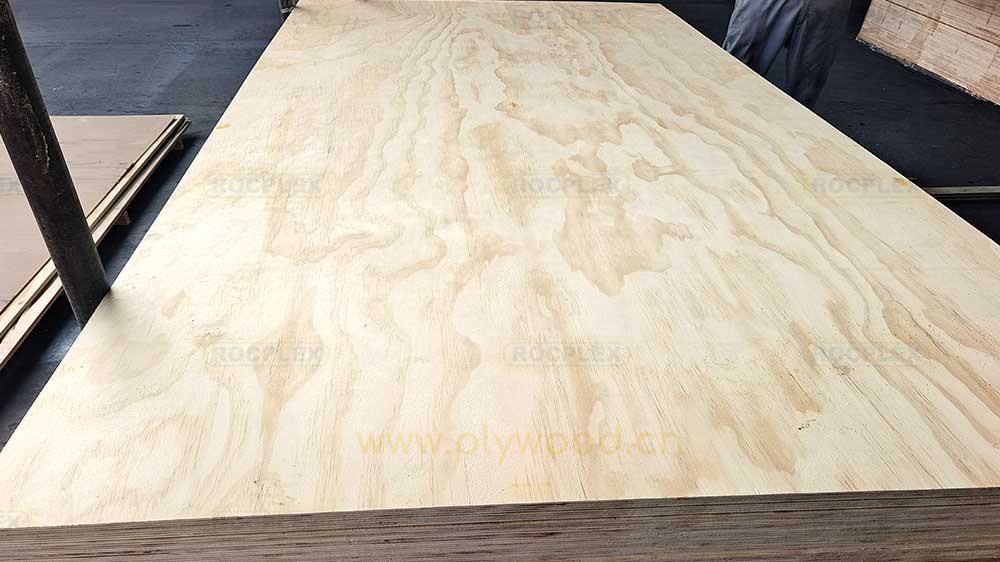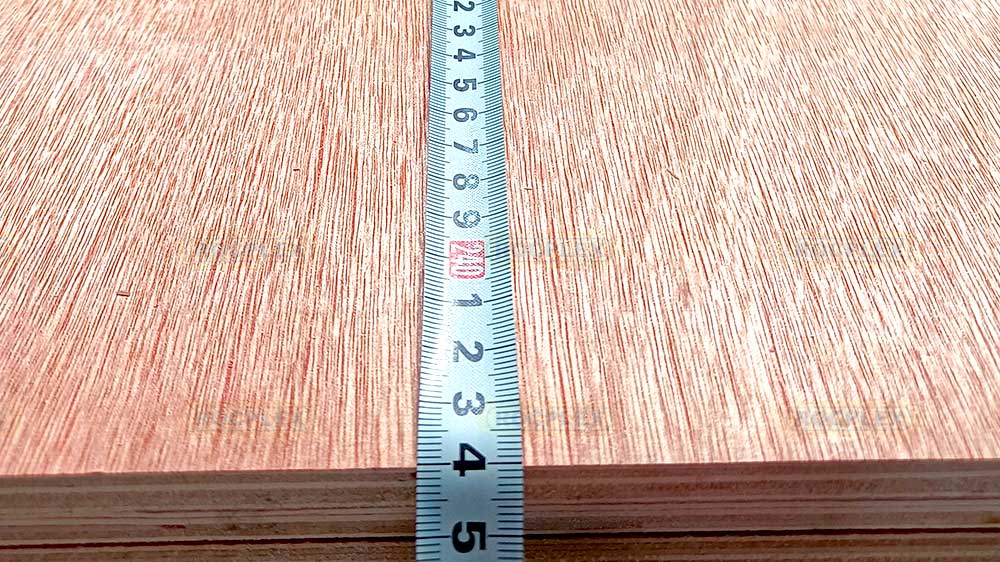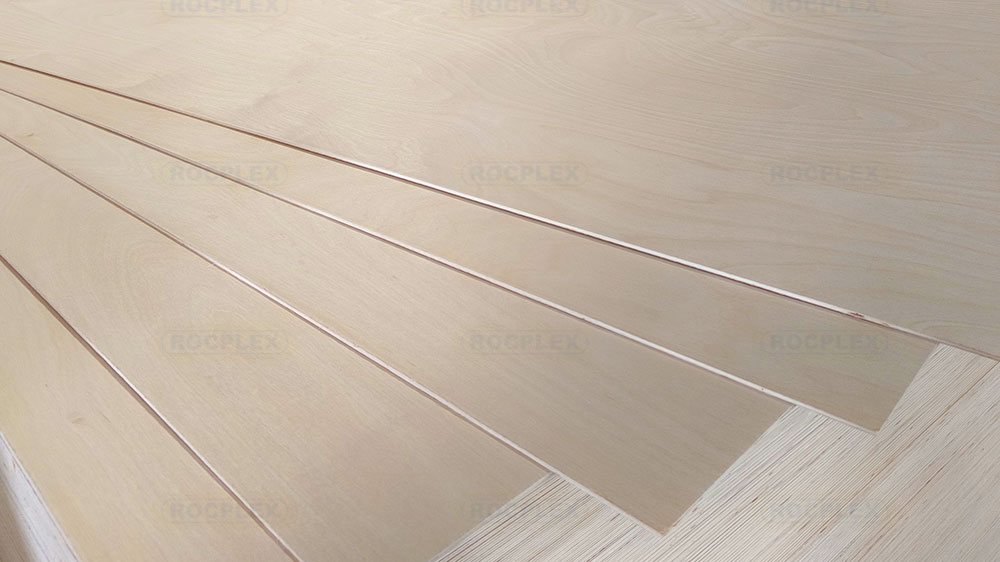What are Timber Veneer Sheets?
Timber veneer sheets are thin slices of wood, typically glued onto core panels (made of wood, particleboard, or MDF) to produce flat panels such as doors, tops, and panels for cabinets, parquet floors, and parts of furniture. These sheets are cut from logs of timber, preserving the natural appearance of wood while being more sustainable and economical. Veneer sheets are available in various species, providing a wide range of textures, colors, and patterns, making them a popular choice for enhancing the aesthetic appeal of interiors and furniture.
The Art of Veneering: A Sustainable Choice
Veneer Production: A Sustainable Process
The process of producing plywood sheet is inherently more sustainable than solid wood use. A single log can produce numerous veneer sheets, reducing the demand for timber and minimizing waste. This efficiency in material usage makes veneering an environmentally friendly option in the woodworking industry.
Enhancing Aesthetics with Natural Beauty
Timber veneer sheets are renowned for their ability to bring the natural beauty of wood into various applications. With their unique grain patterns and warm textures, veneer sheets add a touch of elegance and sophistication to interiors, furniture, and architectural elements.
Versatility in Design and Application
The versatility of timber veneer sheets lies in their ability to be used in a wide range of applications. From wall cladding to cabinetry and from flooring to decorative panels, veneer sheets provide designers and architects with a flexible material that can be adapted to various styles and design concepts.
Advantages of Timber Veneer Sheet
Cost-Effective Solution
One of the primary advantages of timber veneer sheets is their cost-effectiveness. By using a thin layer of real wood, veneer sheets offer the appearance and feel of solid timber at a fraction of the cost. This makes them an attractive option for budget-conscious projects without compromising on aesthetics.
Eco-Friendly and Sustainable
Timber veneer sheets contribute to sustainability in the woodworking industry. By maximizing the use of a single log and reducing the need for solid timber, veneer sheets help in conserving forest resources and promoting environmentally responsible practices.
Durability and Longevity
Despite their thinness, timber veneer sheets are durable and can last for many years with proper care. They are resistant to warping and cracking, which are common issues with solid wood, ensuring the longevity of the products they are used in.
Ease of Maintenance
Maintaining timber veneer sheets is relatively simple. Regular dusting and occasional wiping with a damp cloth are usually sufficient to keep veneer surfaces looking their best. This ease of maintenance adds to the practicality of using veneer sheets in various applications.
Embracing the Future with Timber Veneer Sheets
Timber veneer sheets are not just a material choice; they represent a sustainable and innovative approach to woodworking. With their natural beauty, versatility, and eco-friendly attributes, veneer sheets are paving the way for a future where design and sustainability go hand in hand. Whether you’re a designer, architect, or homeowner, embracing timber veneer sheets means embracing a future where nature’s artistry is celebrated in every creation.
Exploring the Diversity of Timber Veneer Sheets
A World of Wood Species
Timber veneer sheets come in an array of wood species, each with its unique characteristics. From the rich tones of mahogany to the light elegance of birch, the variety of veneers available allows for a wide range of design possibilities. This diversity enables architects and designers to select the perfect veneer that complements the aesthetic and functional requirements of their projects.
Customization and Flexibility
The flexibility of timber veneer sheets extends to their customization options. Veneers can be stained, painted, or treated with various finishes to enhance their natural beauty or achieve a specific look. This adaptability makes veneer sheets a favorite among designers who seek to create bespoke interiors and furniture pieces.
Innovations in Veneer Technology
Advancements in veneer production technology have led to the development of reconstituted veneers, which are engineered to provide consistent patterns and colors. This innovation ensures a uniform appearance in large-scale applications, where natural variations in wood might be less desirable.
The Application of Timber Veneer Sheet in Modern Design
Furniture Making: A Blend of Tradition and Innovation
In furniture making, timber veneer sheets are celebrated. They bring warmth and texture of solid wood. They offer practical benefits too. Veneer-covered furniture is lighter. It is more affordable. It is often more resistant to environmental changes. This makes it popular in residential and commercial settings.
Interior Design: Enhancing Spaces with Natural Elegance
Timber veneer sheets are significant in interior design. They are used for wall panels, cabinetry, and flooring. Veneer’s natural grain patterns add organic beauty. Their versatility allows for innovative design solutions. These solutions meet modern living demands.
Architectural Applications: A Touch of Nature in the Built Environment
In architecture, timber veneer sheet are employed to add warmth and character to buildings. They are often used in cladding, ceiling panels, and other architectural elements, providing a connection to nature in urban environments. The use of timber veneer in architecture not only enhances the aesthetic appeal of structures but also contributes to their sustainability.
The Environmental Impact of Timber Veneer Sheet
Promoting Sustainable Forestry Practices
The timber veneer industry plays a crucial role in promoting sustainable forestry practices. By utilizing thinner slices of wood, veneer production maximizes the use of each log, reducing the need for logging and encouraging the responsible management of forest resources.
Reducing Carbon Footprint
Timber veneer sheets contribute to the reduction of carbon footprint in the construction and design industries. Wood is a natural carbon sink, and by extending the use of a single log through veneering, the carbon stored in the wood is preserved for a longer period, mitigating the release of carbon dioxide into the atmosphere.
Certification and Compliance
The sourcing and production of plywood sheet are often subject to strict certification and compliance standards, such as the Forest Stewardship Council (FSC) certification. These standards ensure that the veneer comes from responsibly managed forests, promoting environmental sustainability and ethical practices in the industry.
The Timeless Appeal of Timber Veneer Sheet
Timber veneer sheets continue to captivate the design and architecture world with their natural beauty, versatility, and sustainability.
We are moving towards an eco-friendly future. Timber veneer plays a significant role in this transition. It creates beautiful, durable, eco-friendly spaces. Veneer is used in furniture, interior design, and architecture. It blends aesthetic appeal with practicality. This makes it a timeless choice. Timber veneer suits modern design well.
Timber Veneer Sheet: Bridging Tradition and Innovation
The Artistic Potential of Veneer
Timber veneer sheets are not just a material; they are a canvas for artistic expression. The unique grain patterns and colors of different wood species offer designers and artisans the opportunity to create intricate and visually stunning compositions. Marquetry and inlay work, where different veneers are combined to create patterns and images, showcase the artistic potential of timber.
Enhancing Acoustic Properties
In addition to their aesthetic appeal, timber sheets can improve the acoustic properties of a space. Wood naturally absorbs sound, and when used in wall panels or ceiling designs, veneer sheets can help reduce noise levels and create a more comfortable acoustic environment. This attribute is particularly valued in concert halls, auditoriums, and other spaces where sound quality is paramount.
Combining with Other Materials
The compatibility of timber veneer sheets with other materials opens up a world of design possibilities. Combining veneer with glass, metal, or stone can create striking contrasts and add a contemporary edge to traditional wood designs. This versatility allows architects and designers to explore innovative combinations that enhance the aesthetic and functional qualities of their projects.
Looking Ahead: The Future of Timber Sheets
Sustainability and Innovation
As the demand for sustainable building materials grows, the timber veneer industry is poised for further innovation. Research and development in veneer production techniques and adhesive technologies aim to improve the environmental footprint of veneer sheets and expand their applications. The future of timber veneer lies in its ability to adapt to the evolving needs of the design and construction industries while maintaining its commitment to sustainability.
Advancements in Digital Fabrication
Digital fabrication technologies, such as CNC routing and laser cutting, are revolutionizing the way timber veneer sheets are used. These technologies enable precise and intricate cutting of veneer, allowing for complex patterns and designs that were previously difficult to achieve. As digital fabrication becomes more accessible, we can expect to see even more creative and innovative uses of plywood sheet in design and architecture.
The Role of Veneer in Circular Economy
Timber veneer sheets have a significant role to play in the transition towards a circular economy.Veneer extends the life of wood resources. It promotes renewable materials. This supports sustainable and regenerative design. The circular economy model is important. It focuses on resource efficiency and waste reduction. These principles are key in veneer production and use.
Future with Timber Veneer Sheets
Timber veneer sheets remain appealing in the future. They offer natural beauty, warmth, and sustainability. These qualities make them popular among architects, designers, and homeowners. The industry embraces innovation and sustainability. This positions it well for future challenges. Veneer will stay relevant in design and architecture. It remains a cherished material.
FAQs
What are timber veneer sheets?
Timber veneer sheets are thin slices of wood that are glued onto core panels to create flat surfaces for various applications such as furniture, flooring, and interior design.
Is timber veneer real wood?
Yes, timber veneer is made from real wood. It is a thin slice of wood that is used to cover the surface of a less expensive material, providing the appearance of solid wood.
Is wood veneer the same as plywood?
No, wood veneer is not the same as plywood. Wood veneer is a thin slice of wood, while plywood is a type of engineered wood product made by gluing together multiple layers of wood veneer.
Which is better, veneer or plywood?
The choice between veneer and plywood depends on the specific requirements of the project. Veneer is often used for its aesthetic appeal, while plywood is valued for its strength and stability.
Why is veneer wood so expensive?
Veneer wood can be expensive due to the cost of sourcing high-quality timber, the skill required to slice and apply the veneer, and the overall demand for natural wood finishes.
Post time: Mar-19-2024




